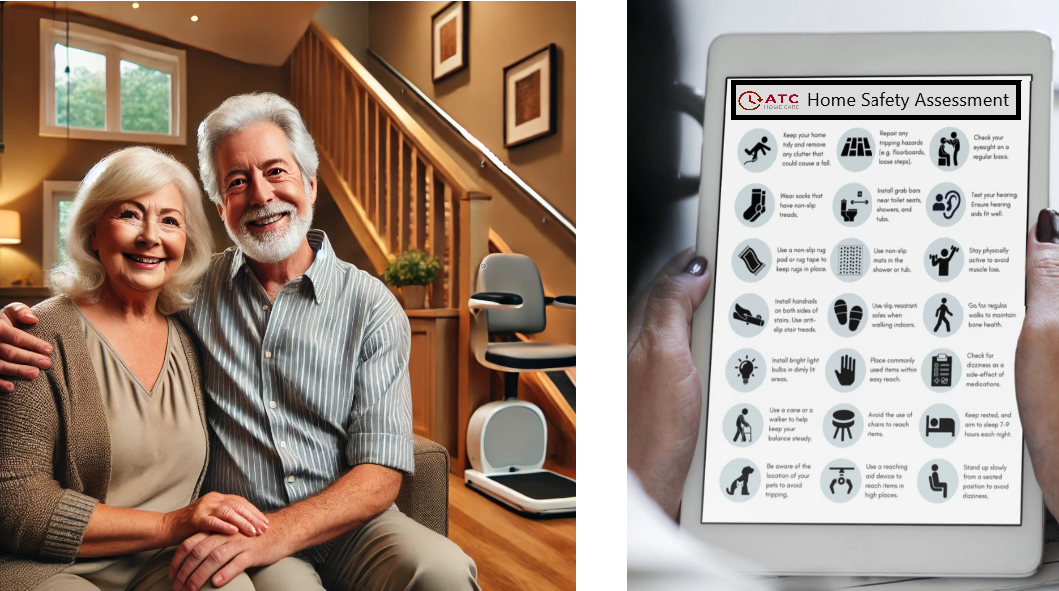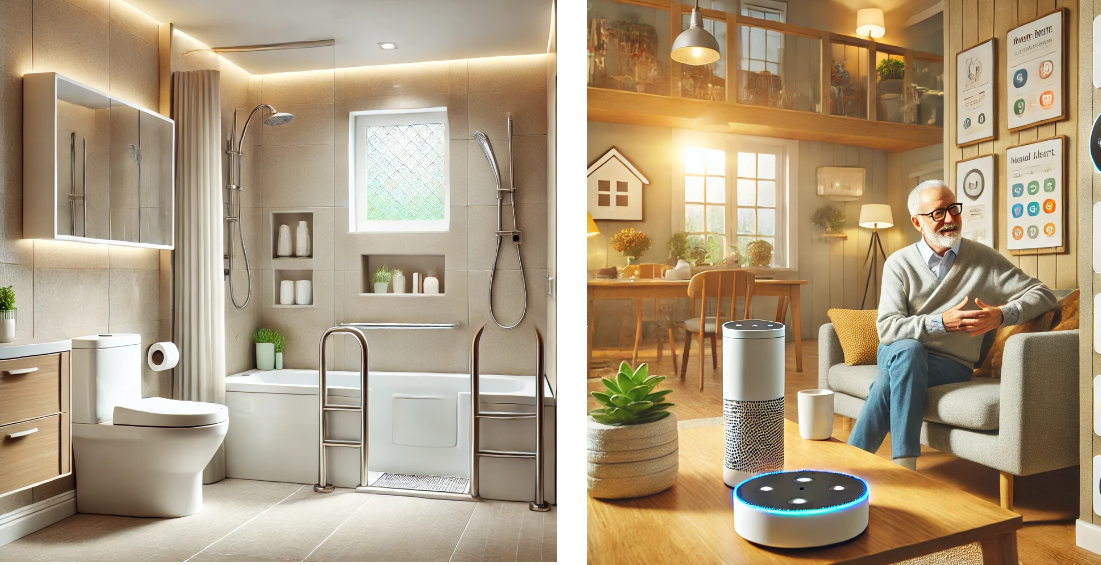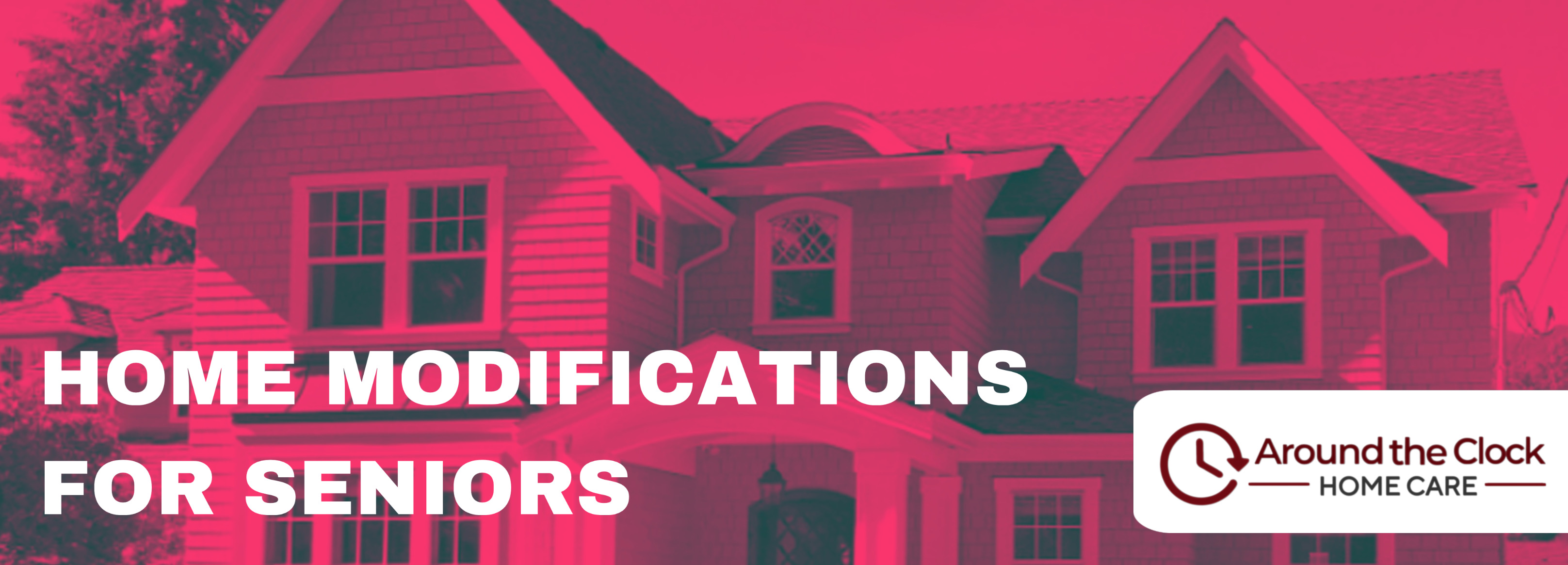Home Modifications for Seniors – A Guide to Aging in Place
Posted on: March 19 2025
Aging in place is a priority for many seniors who want to maintain independence and stay in their own homes as they grow older. However, standard home designs often pose safety hazards, making modifications necessary to improve accessibility and prevent falls. This guide explores essential home modifications for seniors, helping create a safer and more comfortable living environment.
Understanding the Need for Home Modifications
Why Home Modifications are Essential for Aging in Place
As mobility declines with age, simple home features like stairs, bathtubs, or high shelves can become challenging to navigate. Home modifications help mitigate these risks, allowing seniors to live independently while reducing the chance of injuries.
Common Risks and Hazards in Homes for Seniors
- Slippery floors and loose rugs leading to falls.
- Hard-to-reach kitchen storage increasing strain.
- Poor lighting causing visibility issues.
- Narrow doorways and steep stairs limiting mobility.
Assessing Your Home for Senior-Friendly Modifications
Conducting a Home Safety Assessment
A thorough home safety audit can help identify areas that need adjustments. This includes evaluating flooring, lighting, and accessibility in key areas such as the kitchen, bathroom, and entryway.
Consulting with Professionals for Home Evaluations
Occupational therapists, physical therapists, nurses, and home care specialists can assess a home and recommend modifications tailored to the resident’s needs.

Entryway and Exterior Modifications
Installing Ramps and Handrails for Accessibility
Replacing steps with ramps ensures easier access for those using walkers or wheelchairs. Sturdy handrails along pathways provide additional support.
Improving Outdoor Lighting for Better Visibility
Well-lit entrances and motion-sensor lights enhance nighttime visibility, reducing tripping hazards.
Lever-Style Door Handles vs. Traditional Doorknobs
Lever handles are easier to grip and turn compared to round doorknobs, making entry more accessible for those with arthritis or limited hand strength.
Making Bathrooms Safe and Accessible
Installing Grab Bars and Non-Slip Flooring
Grab bars near the toilet and shower provide added support, while non-slip mats help prevent falls.
Walk-In Tubs and Roll-In Showers for Easier Bathing
Replacing traditional tubs with walk-in models eliminates the need to step over high edges, reducing fall risks.
Raised Toilet Seats and Support Rails
Elevated toilet seats make it easier to sit and stand, while support rails add stability.
Kitchen Modifications for Senior Safety
Lowering Countertops for Wheelchair Accessibility
Adjustable-height countertops make food preparation easier for wheelchair users.
Pull-Out Shelves and Easy-to-Reach Storage Solutions
Pull-out shelves reduce the need for bending and reaching, improving accessibility.
Anti-Scald Devices and Automatic Shut-Off Appliances
These safety features prevent burns and minimize fire hazards in the kitchen.
Lighting Improvements for Senior-Friendly Homes
Importance of Bright and Well-Placed Lighting
Automatic and Motion-Sensor Lighting Solutions
Smart Home Technology for Senior Living
Voice-Activated Systems for Convenience
Emergency Alert Systems and Medical Monitoring

Cost and Funding Options for Home Modifications
Estimated Costs of Common Modifications
- Installing grab bars: $100–$300
- Walk-in tubs: $2,000–$7,000
- Stairlifts: $3,000–$5,000
Government Assistance Programs and Grants
Medicare, Medicaid, and Veterans Affairs (VA) offer financial aid for home modifications.
Insurance Coverage and Financing Options
Some insurance policies and nonprofit programs cover certain accessibility modifications.
Home modifications for seniors play a crucial role in ensuring safety, independence, and comfort. Whether through small adjustments or major renovations, these changes allow aging individuals to stay in their homes longer while reducing the risk of accidents.
Darin Terry, Administrator
Contact Us today at Around the Clock Home care to learn more out home safety assessments for you or a loved one!
Call (405) 222-6478 or (580) 786-5165
Posted in News
